
Chapter #1
Hydrogen’s abundant opportunities
Green hydrogen has significant investment potential at every stage of the value chain — provided it is actually green.
Hydrogen is already in use in industrial applications — either as-is or through a conversion into ammonia. Therefore, there is already a value chain in place based on production (mainly based on steam reforming or oxidation of hydrocarbons), virtual pipeline (trucks) and storage close to industrial plants.
Figure 1: Overview of hydrogen value chain
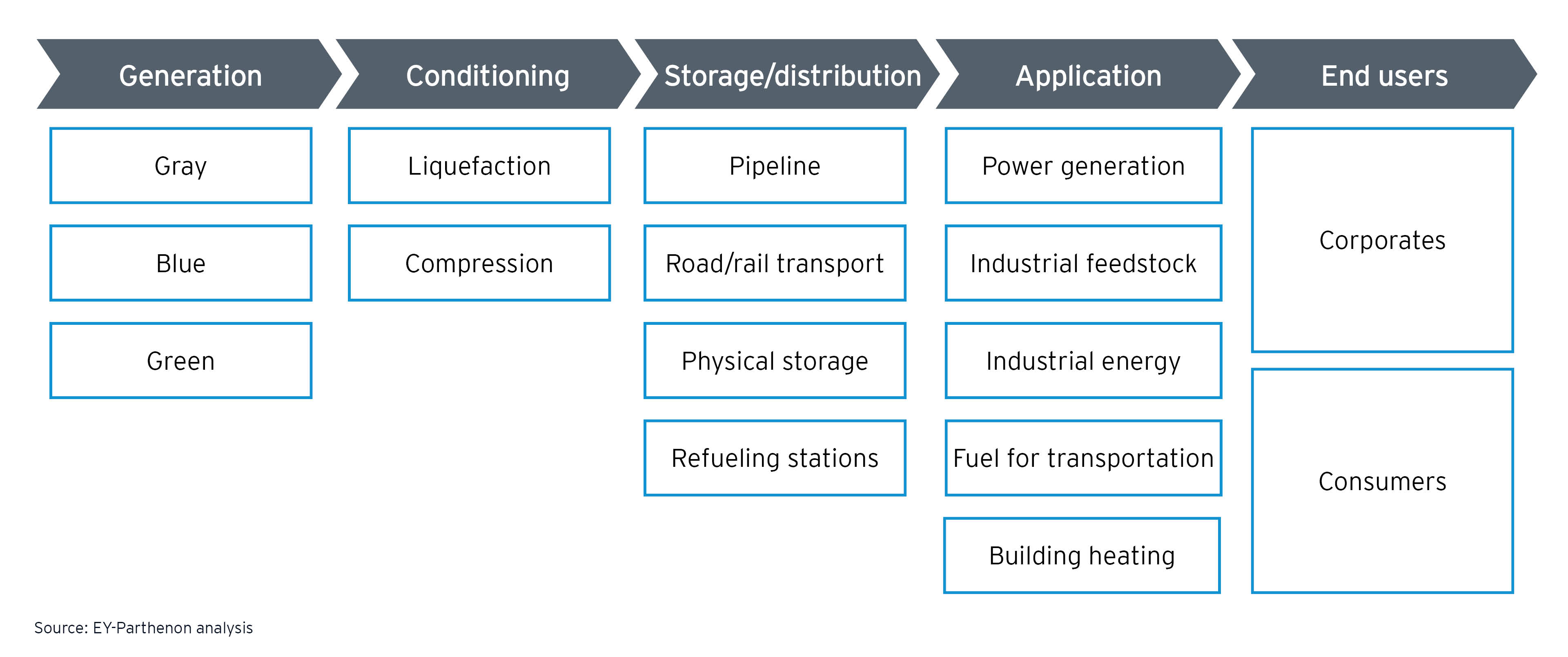
However, the need for greener generation, expected growth in traded volumes, and new and increasing applications will require an evolution in the sector’s current configuration, bringing several opportunities for investment across the value chain, including:
- New technologies for hydrogen production
- New business models and solutions for transportation and distribution
- New applications as a green energy source
If achieved, green hydrogen can help to decarbonize a variety of sectors and create numerous business opportunities across the value chain, from power generation and transportation to energy and industrial feedstock.
Hydrogen generation comes in three shades, but only one is green
As an unlimited resource, hydrogen has the potential to power the world to infinity. Among its many advantages, hydrogen can be produced anywhere from a variety of resources for use either on-site or through distribution to a destination. Further, when combined in a combustion cell with oxygen, it produces energy in the form of electricity in a way that decreases greenhouse gas emissions.
However, while it produces zero emissions at its end point, how “green” hydrogen is depends on the fuels used to make it. The decarbonizing power of hydrogen relies primarily on its production method and on the natural resources that go into its production.
- Hydrogen is classified as “gray” if it uses a fossil fuel as a source.
- Hydrogen is labeled “blue” if carbon capture and storage (CCS) solutions are in place when using fossil fuels, to contain carbon emissions emitted from the production process.
- Hydrogen is defined as green if it is generated from water and renewable energy to power the electrolyzers, making the process completely green and sustainable.
Figure 2: Hydrogen generation: gray, blue and green
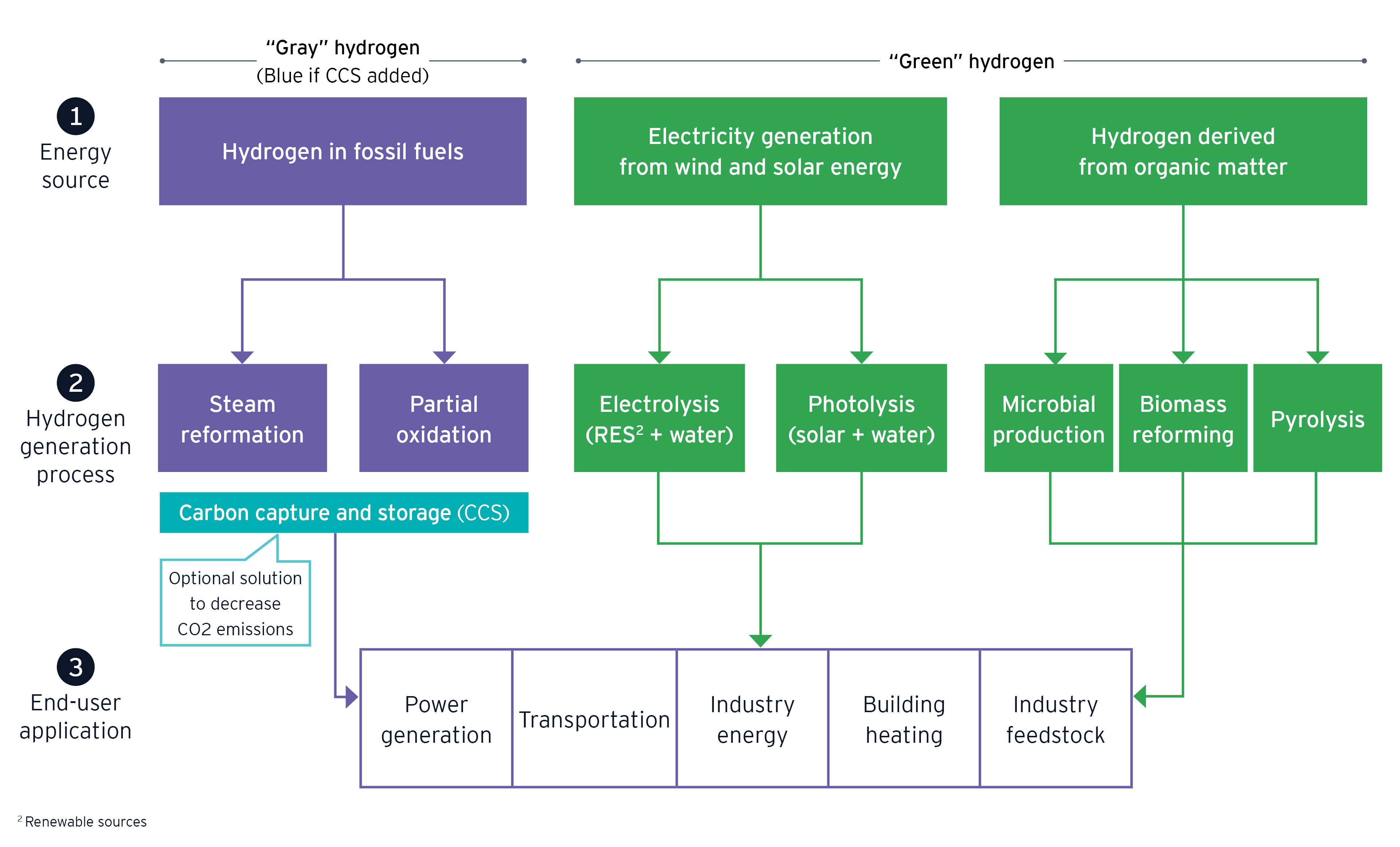
Almost all of the hydrogen produced today is gray hydrogen and is predominantly used to produce ammonia and fertilizer, as well as to refine oil.
Three business models highlight the options for green hydrogen distribution
Although there are several ways to produce green hydrogen, electrolysis offers the widest array of practical applications. However, the biggest opportunity lies in green hydrogen generation and distribution.
There are three ways green hydrogen can be generated, depending on how end-users plan on consuming it.
| Generation method | Description | Benefit | Challenge |
On-site plant model: on-site production |
The end-user installs and operates the technical solution to generate green hydrogen at the point of use, using renewable power generated on‑site |
No transportation costs; no transportation infrastructure needed |
Small production capabilities; balance needed between generation capacity and required volumes |
Off-site plant model: off-site production and distribution |
Power and utilities companies generate green hydrogen at large off-site production plants and transport the gas directly to the consumer, leveraging different channels (e.g., pipeline, trucks) |
Mass consumer distribution; lower production costs based on economies of scale |
Infrastructure is a project enabler |
Hybrid model: decentralized generation and district distribution |
A near-to-end-user diffused system of electrolyzers is hooked up to an existing electrical grid powered by renewables; a local grid is developed to serve a district of consumers |
Lower production costs based on economies of scale and limited time to develop the hydrogen grid |
Need to collect consensus to increase local volume consumption |
Figure 3: Green hydrogen generation – three supply chain models available


Chapter #2
The challenge: green is great, but it comes at a cost
Without government incentives, it may take until 2030 before green hydrogen becomes economically competitive.
The biggest barrier in turning gray hydrogen into green hydrogen and expanding its industrial and commercial use is cost. Currently, green energy is prohibitively expensive when compared to the production of gray or blue hydrogen. Three factors will contribute to decrease the important production cost gap.
| Factor | Contribution to decrease production cost gap |
| The evolution of the electrolyzer cost | Capital expenditures on technology need to decrease by 60%-70%. This is in line with cost projections of the technology producers, which expect strong savings through economies of scale, larger factories and a flatter learning curve. |
| Decline in renewables cost | Energy consumed during the conversion of hydrogen is a key contributor of the running costs and needs to decrease by half. This should be reachable given the levelized cost of electricity (LCOE) using renewable technologies, such as wind and solar. |
| Increase in CO2 costs | For countries where an emission trading scheme is in place, the cost of CO2 emissions is expected to increase by 50% over the next 10 years. As a cost applied to gray hydrogen technology and natural gas, an increase in these costs will help to accelerate the cost competitiveness of green hydrogen. |
Hydrogen has a wide range of applications, but it may be 2030 before many are cost competitive
Hydrogen has five potential overarching applications across a range of industries.
- Power generation: Through the opposite conversion used to produce electrolysis, hydrogen can be reconverted into electric power, where it can provide energy when needed. As a long-lasting and reliable source of energy, it offers a new solution to address the need to store power. It also offers a means to stabilize energy production flow and shift over time, which can plague renewable energy generation.
- Transportation fuel: Hydrogen can be used to supply energy for cars and other transportation vehicles.
- Feedstock for industry: Hydrogen is a chemical element applied in several industries for its transformative power. Refining and steel production are among the most known sectors that are already using it in their process flow.
- Energy source for industries: Hydrogen can be burned to produce heat as a substitute to natural gas. Some of the features, such as density and heating power, are different, but either a resetting or an investment in an equipment switch is feasible. Used for this purpose, hydrogen has the potential to significantly reduce greenhouse gas emissions.
- Energy source for heating buildings: In parallel to being an energy source for industries, gas hydrogen can be used to heat buildings, including residential houses, schools, hospitals and commercial buildings.
Figure 4: H2 applications
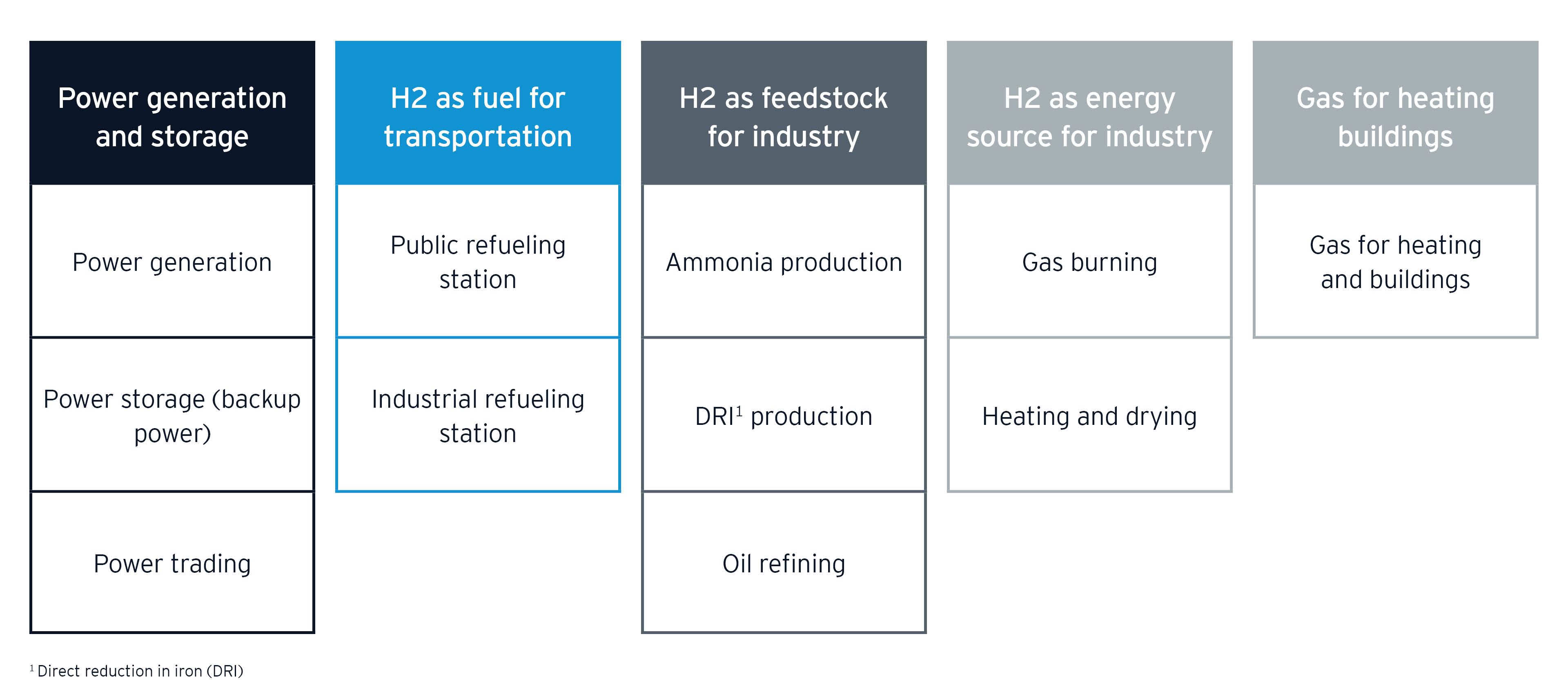
However, without government incentives, it will take at least until 2030 before green hydrogen becomes economically competitive with other hydrogen production methods (depending on the maturity level of the application).
In cases where hydrogen is already used as an input to the process, conversion into green hydrogen requires less investment and the cost gap is smaller, allowing it to reach cost competitiveness sooner.
Conversely, conversion of natural gas into hydrogen may take the longest to be cost competitive. Although it has the largest impact on greenhouse gas emissions and has a large addressable market, there is a long way to go before green hydrogen reaches cost parity with natural gas.
Figure 5: Timing of expected rollout by application
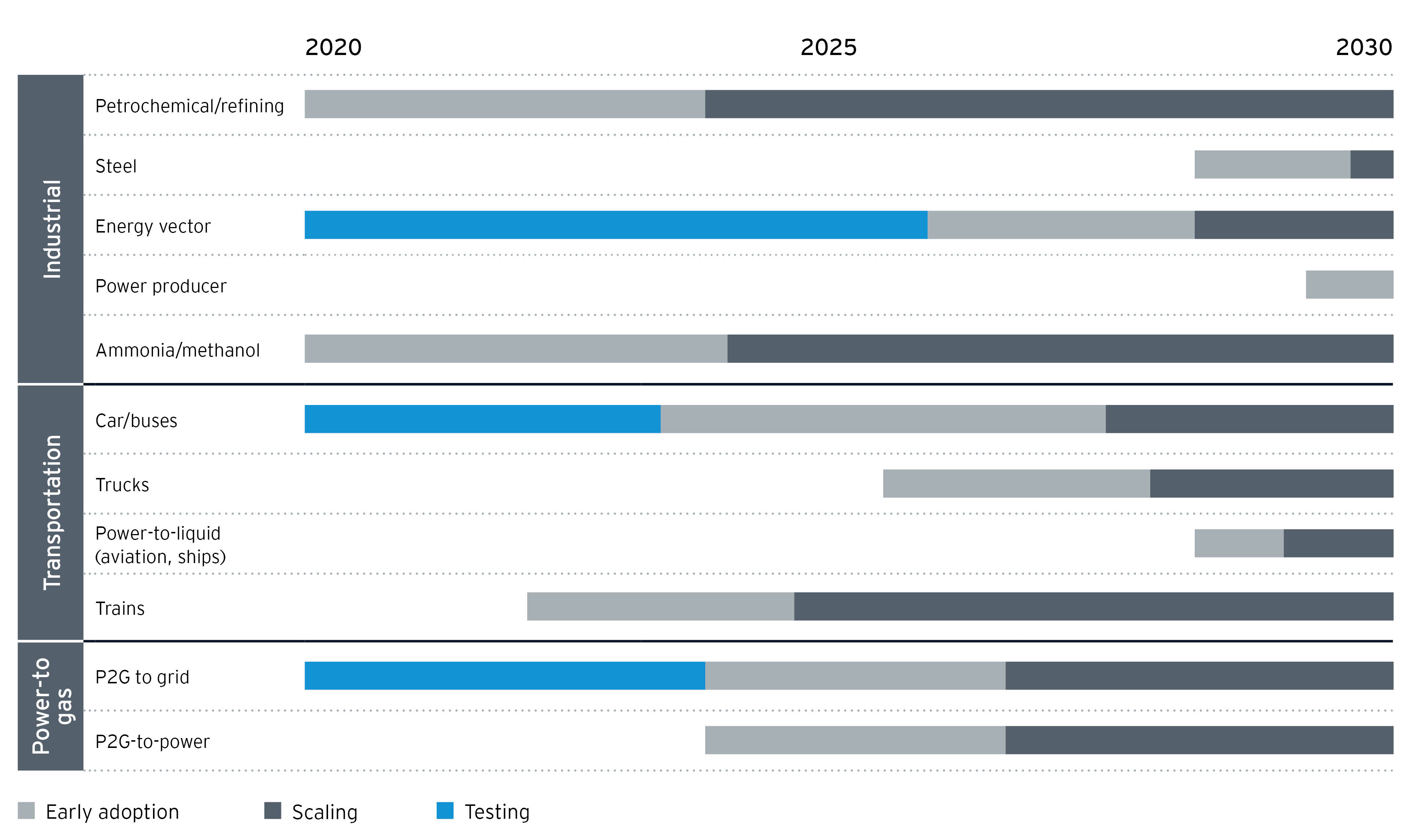
If green hydrogen won’t become cost-effective until 2030, why consider it now?
Despite the higher cost, demand is growing for green hydrogen. Based on an EY-Parthenon study, the forecasted market size for green hydrogen production by 2030 should reach almost 140 GW of installed capacity. This suggests a considerable expansion, given that as of 2020 the cumulative installed capacity is lower than 1 GW).1
In terms of applications, energy sources — which include both power-to-grid and power-to-power — are expected to become the most relevant, with an acceleration in the second half of the period. Capacity for industrial applications (with a focus on on-site installed capacity) and for transportation also have potential for accelerated cost efficiency.
Ambitions for accelerating green hydrogen adoption spreads fairly evenly across geographies, from Europe to China and from North Africa to the US.
It is still too early to make accurate projections. However, we foresee a rapid and continuous evolution of green hydrogen capabilities development.
Figure 6: Hydrogen estimated installed capacity 2030 by application and geography

The acceleration of both demand and expansion stems partly from government and corporate decarbonization initiatives, and partly from government and corporate targets for hydrogen-powered vehicles.
In December 2015, 194 countries signed the Paris Agreement,2 which pledges to keep a global temperature rise this century below 2 degrees Celsius and to pursue efforts to limit the temperature increase to 1.5 degrees Celsius. The agreement also requires all signatory countries to make their best effort in dealing with the impacts of climate change.
To achieve these ambitious goals, countries around the world have to take material steps to reduce their greenhouse gas emissions.
- In 2019, the European Union (EU) introduced legislation (European Green Deal)3 that would aim to reduce the EU’s greenhouse gas emissions to between 50% and 55% below 1990 levels by 2030.
- China, meanwhile, has taken steps to require “480 million tons of carbon capacity from steel production to meet ‘ultra-low emission’ standards by 2020.”4 It is also upgrading its power grid to reduce their reliance on coal for energy production.
- In the US, California has led the way, with the Global Warming Solutions Act of 2006,5 which set a statewide limit on greenhouse gas emissions. In 2016, the state aimed higher, raising the goal for greenhouse gas emission reduction to 40% below 1990 levels by 2030.
Another reason organizations are considering green hydrogen now versus 10 years from now is that by being a pioneer in the green hydrogen arena, they see opportunities to seize a competitive advantage. Technology companies have been the first to move, motivated to be early to market with better, more efficient, more cost-effective electrolyzers and fuel cells. Private equity firms with significant amounts of cash on hand are also making bets on green hydrogen through mergers and acquisitions — a clear sign of booming interest.
Although green hydrogen costs have not yet reached parity with gray and blue hydrogen, for an increasing number of organizations, there is enough of an incentive to climb aboard the green hydrogen train now.
Some have already begun integrating green hydrogen into their strategic agenda. For those looking to get started, leaders will want to seek the answers to the following questions:
- What is our green hydrogen value proposition?
- Do we have a solution ready, or do we have to implement large-scale changes to seize existing opportunities?
- Are there new market opportunities that require new support or infrastructure? Are there new business ideas or business models that we need to consider?
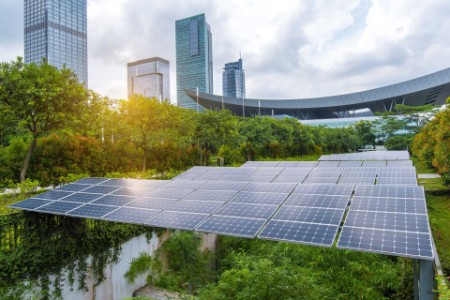
Chapter #3
Five factors that can accelerate green hydrogen adoption
Lower costs, more infrastructure, government regulations and incentives and a commitment across the board can all contribute to faster adoption.
Five factors can accelerate green hydrogen adoption
For those looking to capitalize on green hydrogen, there are five factors can help to accelerate green hydrogen adoption.
1. Acceleration in cost reductions
- Forecasts show that it will take at least 10 years to reach cost convergence with gray hydrogen.
- An evolution in production techniques and in economies of scale can accelerate this tipping point.
2. Infrastructure
- Another component of the full cost of hydrogen is the complexity of connecting large production points with a decentralized consumption.
- Countries with natural gas pipelines can accelerate the blending solution with methane to start increasing consumption volumes, driving demand and production. However, this solution remains complex.
- In the short term, energy providers and/or governments can develop refueling districts to connect a bundle of consumption points with one or more production points, limiting the complexity.
3. Regulation and incentives
- Often, one of the best tools to accelerate green energy adoption is regulation and incentives. It worked for solar and wind, where incentive schemes kicked off the installation, driving demand and cost decreases that enabled renewables to reach grid parity in 20 years. A similar approach can work for green hydrogen, too.
- In 2017, Japan became the first country to develop a hydrogen sector with its “Basic Hydrogen Strategy.”
- In November 2019, Australia released a National Hydrogen Strategy.
- In July 2020, the EU released its three-phase hydrogen strategy as part of the European Green Deal.
- Also, in July 2020, the U.S. Department of Energy’s Office of Fossil Fuels released a hydrogen strategy focused on research, development and use of hydrogen technologies.
- To see success in the execution of their strategies, countries would benefit from pairing their strategies with incentives and subsidies.
4. Commitment from operators
- Operators all along the energy supply chain are beginning to turn their attention toward green hydrogen.
- Big energy players becoming early adopters of green hydrogen has the potential to accelerate generation, storage and distribution capabilities.
5. Robust communications campaign to attract consumers
- One of the biggest barriers to adoption is the myth that hydrogen is dangerous. In an anonymous social media survey highlighted in a World Economic Forum article, 49.5% of respondents thought hydrogen was “generally safe,” while 31.4% thought it was “generally dangerous.”
- Apart from such sensational disasters as the Hindenburg and the Space Shuttle Challenger, there is a perception that hydrogen is highly flammable and that if used in such applications as fuel cells for vehicles, could result in an explosion in the event of a collision.
- An information campaign that dispels the myths of hydrogen’s safety and highlights the benefits of green hydrogen in achieving a decarbonized, green society, could motivate consumers to push for faster adoption of green hydrogen.
Green hydrogen’s time has come
After decades of languishing in relative obscurity, technological advances and diminishing renewables costs could soon make green hydrogen the new thing of decarbonization.
- Organizations that are currently using gray hydrogen are particularly well-poised to take advantage of the green hydrogen wave as first movers.
- Organizations that can benefit from a green hydrogen revolution are developing strategies and testing business models.
- Even organizations that have no hydrogen agenda but want to reduce their carbon footprint can be thinking about green hydrogen now.
The more organizations focus on hydrogen, the faster the path to cost competitiveness and the faster consumer demand will rise. To be a builder at the right time, you need to pour the foundation today.
Summary
Hydrogen’s abundance makes it an enticing option amid calls for an exponential increase in renewable energy to meet decarbonization targets. Despite languishing as an also-ran renewable for decades, as technology advances accelerate and costs decrease, now may finally be green hydrogen’s time.


